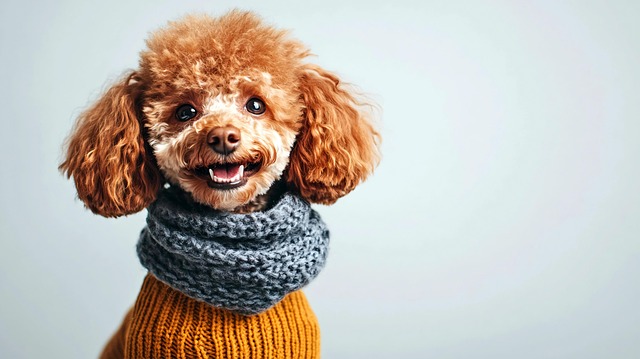
How can I tell if my dog's heatstroke is serious
Let’s be real: It’s a sticky August morning in Los Angeles, and you took your 2-year-old Golden Retriever, Max, for a walk a little later than usual
Poodles are known for their curly, dense coats—beautiful when well-cared for, but a tangled mess if neglected. Brushing is key to keeping that fur healthy, but the question of doing it wet or dry isn’t as straightforward as it seems. It depends on what you’re trying to achieve, and getting it right can save both you and your pup a lot of frustration.
Dry brushing is usually the way to go for regular maintenance. Poodle hair has a tendency to mat when it’s damp, and trying to work through tangles on wet fur can pull painfully at their skin. A quick brush with a slicker brush or metal comb before baths removes loose hair and surface tangles, making the washing process smoother. It’s also a good chance to check for ticks, burrs, or small knots that might have snuck in during playtime—catching those early prevents bigger problems later.
Wet brushing has its place too, but it’s best saved for after a bath, when you’re working with conditioner. The water and conditioner soften the hair, making it easier to detangle stubborn mats that dry brushing missed. Start from the ends and work your way up to the roots, using a wide-tooth comb to gently separate knots. Rushing this step is a mistake—yanking at wet tangles can hurt your poodle and make them dread grooming time. Just remember to blot excess water first; soaking wet fur is heavier and harder to manage.
 Timing matters with both methods. Brushing a poodle when they’re half-dry is a bad idea. That in-between stage, where the coat is damp but not soaking, is when mats form fastest. If you skip brushing before a bath and wait until they’re partially dry, you’ll likely find tight clumps that are tough to fix without cutting. It’s a common misstep, especially with busy owners, but taking the extra 10 minutes to brush dry first avoids a lot of hassle.
Timing matters with both methods. Brushing a poodle when they’re half-dry is a bad idea. That in-between stage, where the coat is damp but not soaking, is when mats form fastest. If you skip brushing before a bath and wait until they’re partially dry, you’ll likely find tight clumps that are tough to fix without cutting. It’s a common misstep, especially with busy owners, but taking the extra 10 minutes to brush dry first avoids a lot of hassle.
Your poodle’s coat type plays a role too. Standard Poodles with thicker fur might need more dry brushing sessions to keep mats at bay, while Toy Poodles with finer curls could handle a gentle wet brush more often. Puppies, with their softer, less dense coats, are more sensitive to pulling—so starting with short, positive dry brushing sessions helps them get used to the routine. Making it a calm, reward-filled activity turns grooming from a chore into bonding time.
Grooming tools make a difference, regardless of wet or dry. A pin brush works well for dry fur, while a rubber curry comb can help loosen dead hair during baths. Avoid using human brushes—they’re not designed for poodle curls and can cause breakage. And always follow local guidelines for pet grooming products; some harsh shampoos or conditioners might irritate their skin, which in turn affects how their coat responds to brushing.
At the end of the day, there’s no one-size-fits-all answer. Dry brushing for regular upkeep, wet brushing with conditioner for deep detangling—combining both methods keeps your poodle’s coat in top shape. What matters most is being gentle, consistent, and paying attention to how your pup reacts.

Let’s be real: It’s a sticky August morning in Los Angeles, and you took your 2-year-old Golden Retriever, Max, for a walk a little later than usual

You're enjoying a summer afternoon at the park when you notice your dog has stopped panting and appears disoriented - their gums are bright red

Let’s paint the picture: You’re in your Denver apartment, watching your 4-year-old Boston Terrier, Ruby, plop down mid-play session with her favorite toy

Many dog owners notice their pets nails seem shorter after regular walks,but how much does this daily activity actually help?The answer depends on where you walk—concrete sidewalks or asphalt streets gently file nails as a dog's paws hit the ground

Most dog owners notice their pup scooting across the carpet at some point, but few connect it to impacted anal glands. These small sacs near a dog’s rectum secrete a scent for marking territory

Most vets agree that regular dog teeth cleaning is key to avoiding painful dental issues later. For healthy adult dogs, a professional cleaning at the vet’s office every 12 to 18 months usually works well.